Unless you've been living in a bomb shelter for the majority of your life, ala Brendan Fraser in “Blast from the Past,” you’re probably well aware that we've been in a bit of a situation in recently often referred to as a pandemic. This pandemic has controlled the better part of our lives over the last nearly three years by way of lockdowns, quarantines, social-distancing, masking, hand-sanitizing, and vaccinations. However, what exactly are the defining aspects of a pandemic which necessitated such a declaration in the first place?
According to the WHO in 2003, this was the definition of a pandemic:
“An influenza pandemic occurs when a new influenza virus appears against which the human population has no immunity, resulting in several, simultaneous epidemics worldwide with enormous numbers of deaths and illness. With the increase in global transport and communications, as well as urbanization and overcrowded conditions, epidemics due the new influenza virus are likely to quickly take hold around the world.”
https://web.archive.org/web/20030202200410/http://www.who.int/csr/disease/influenza/pandemic/en/index.html
Yet, just in time for the swine flu in 2009, the definition of what a pandemic is suddenly changed:
“A disease epidemic occurs when there are more cases of that disease than normal. A pandemic is a worldwide epidemic of a disease. An influenza pandemic may occur when a new influenza virus appears against which the human population has no immunity. With the increase in global transport, as well as urbanization and overcrowded conditions in some areas, epidemics due to a new influenza virus are likely to take hold around the world, and become a pandemic faster than before. WHO has defined the phases of a pandemic to provide a global framework to aid countries in pandemic preparedness and response planning. Pandemics can be either mild or severe in the illness and death they cause, and the severity of a pandemic can change over the course of that pandemic.
https://web.archive.org/web/20091016215703/http://www.who.int/csr/disease/influenza/pandemic/en/index.html
As can be seen, within six years, the definition of a pandemic morphed so that it was now no longer required for an enormous amount of death and illness to occur. All that was required for a pandemic to be declared was a greater number of cases than usual. A pandemic could be either mild or severe with the severity permitted to change throughout the pandemic. This change in definition provided the WHO a much easier time labelling any given situation a pandemic, even in instances of a mild flu:
WHO exposed: How health body changed pandemic criteria to push agenda
THE WHO's investigations into the Swine Flu pandemic of 2009 have since found that the virus was largely overplayed, with many questioning whether it was foul play to push H1N1 onto the global stage as a serious crisis
The 2009 Swine Flu Pandemic (H1N1) swept the globe, lasting some 20 months. It was the second of two pandemics involving the H1N1 influenza strain – the first having hit during 1918-20 in what is now known as the Spanish Flu pandemic.
In the years following the pandemic, the World Health Organisation (WHO) faced fierce criticism over its handling of the situation.
Some medical experts doubted whether the H1N1 outbreak was really a pandemic at all.
Dr Wolfgang Wodarg, a German doctor and former member of parliament, had been watching the spread of swine flu in Mexico City – where the virus was first recorded – and was puzzled at the reaction of the WHO.
In 2010, he said: "What we experienced in Mexico City was a very mild flu which did not kill more than usual – which killed even fewer people than usual.
"This was suddenly, a fast-spreading mild flu, a pandemic.
"But this is not the definition of a pandemic I learned, which has to be severe, with a much higher than usual death rate."
In the months leading up to the WHO’s declaration of the pandemic as a “level 6” contagion – the highest possible level – many countries including Italy, Germany, France and the UK made secret agreements with pharmaceutical companies.
These contracts obliged the countries to buy Swine Flu vaccinations only if the WHO raised the pandemic to a level 6.
During the 2018 documentary “TrustWHO”, filmmaker Lillian Franck unearthed footage that showed WHO delegates six weeks before the level 6 pandemic was issued as having described Swine Flu as a “moderate” situation.
This description was given six weeks before the WHO changed its criteria for a level 6 pandemic, deleting “severity of illness” from the requirement of a pandemic phase.
It was thus made easier to enter the world into a serious global pandemic.
https://www.express.co.uk/news/world/1281081/who-world-health-organisation-coronavirus-latest-swine-flu-covid-19-europe-politics-spt
For those keeping track of the debate surrounding the existence of “SARS-COV-2” and the legal challenges against the fraudulent PCR results in Germany, Dr. Wolfgang Wodarg is a familiar name. He is an internal medicine doctor and former head of health at the Council of Europe who has been highly critical of the WHO in the past for changing its definition for declaring a pandemic and even led an investigation into their actions:
Why EU investigated WHO for “fake pandemic”
In January 2010, one year after the pandemic when the world still had a low number of cases, the Parliamentary Assembly of the Council of Europe (PACE) launched an investigation into the undue influence of Big Pharma and WHO for falsifying a pandemic in order to create a global vaccine market.
Change definition to more easily declare a pandemic
Spearheaded by Dr Wolfgang Wodarg, chairman of the Health Committee in PACE, the inquiry stated that “in order to promote their patented drugs and vaccines against flu, pharmaceutical companies influenced scientists and official agencies responsible for public health standards to alarm governments worldwide and make them squander tight health resources for inefficient vaccines strategies, and needlessly expose millions of healthy people to the risk of an unknown amount of side-effects of insufficiently tested vaccines.”
According to a Forbes article in February 2010 entitled “Why the WHO Faked A Pandemic”, Wodarg had declared that the false pandemic is “one of the greatest medicine scandals of the century”, and even Dr. Ulrich Kiel, director of the WHO Collaborating Center for Epidemiology in Munster, Germany, labeled the pandemic a hoax and that “we are witnessing a gigantic misallocation of resources in terms of public health.”
During the hearing Wodarg testified the WHO, then under China’s director-general Margaret Chan (2007-2017), deliberately changed the definition for a pandemic and downgraded its criteria in order to make it easier to declare one.”
“The new definition downgraded the criteria to stating simply that there had to be a virus that spread beyond borders to which people had no immunity. As such a pandemic no longer has to exceed seasonal and heavy waves of influenza by several orders of magnitude, and can be much milder than the seasonal flu—which again has the mortality burden of up to half a million annually.
As Dr. Ulrich Keil testified, the severity of the disease was no longer relevant to declare a pandemic. When he asked Dr. Krause from the Robert Koch Institute in Berlin “What might happen if WHO next year defined sneezing as a pandemic. Would you also start a vaccination campaign?” Dr. Krause “responded with a clear YES!”
Dr. Wodarg is also a part of the Corona Investigative Committee with lawyer Reiner Fuellmich which has looked to expose this phony pandemic through legal recourse by attacking the fraudulent PCR test. Some will remember that Dr. Wodarg was involved in a heated exchange with both Dr. Andrew Kaufman and Dr. Stefan Lanka when they met with the group and provided the reasoning for why the existence of “SARS-COV-2,” and by extension all other “viruses,” should be challenged rather than the committee focusing primarily on the PCR test. Showing the world that the “virus” does not exist not only ends the PCR test but also lockdowns, social distancing, masks, vaccinations, antivirals, etc. and brings this whole house of cards tumbling down. Sadly, Dr. Wodarg and the rest of the committee were not very receptive to this course of action:
https://odysee.com/@Corona-Investigative-Committee:5/Andrew-Kaufman-Stefan-Lanka-session-90-en:a
In any case, it is clear that the WHO made it easier for themselves to declare a pandemic. They worked with pharmaceutical companies and governments in order to push for a vaccination campaign for a swine flu “pandemic” which ended up being massively overstated and eventually considered nothing more than a mild flu. Even Forbes took the WHO to task for this blunder in 2009 stating that this was a political maneuver aimed at consolidating power and redistributing wealth:
The Pandemic Is Political
“As evidence continues to mount that swine flu is more of a piglet than a raging razorback, why isn’t curiosity mounting as to why the World Health Organization declared it a pandemic? And definitions aside, why does the agency continue to insist we’re going to get hammered? The answers have far less to do with world health than with redistribution of world wealth.
Medically, the pandemic moniker is unjustifiable. When the sacrosanct World Health Organization (WHO) made its official declaration in June, we were 11 weeks into the outbreak, and swine flu had only killed 144 people worldwide–the same number who die of seasonal flu worldwide every few hours. The mildest pandemics of the 20th century killed at least a million people worldwide. And even after six months, swine flu has killed about as many people as the seasonal flu does every six days.
So how could WHO make such an outrageous claim?
Simple. It rewrote the definition of “pandemic.”
A previous official definition (and widely used unofficial one) required “simultaneous epidemics worldwide with enormous numbers of deaths and illness.” Severity–that is, the number–is crucial, because seasonal flu always causes worldwide simultaneous epidemics. But one promulgated in April just days before the announcement of the swine flu outbreak simply eliminated severity as a factor.
That’s also how we can have a “pandemic” when six months of epidemiological data show swine flu to be far milder than the seasonal variety. New York City statistics show it to be perhaps a 10th as lethal.”
“So when pig flu conveniently appeared, the WHO essentially crossed out “avian,” inserted “swine,” and WHO Director-General Margaret Chan could boast: “The world can now reap the benefits of investments over the last five years in pandemic preparedness.”
Yet this doesn’t explain why the agency hyped avian flu in the first place, nor why it exaggerated HIV infections by more than 10 times, or why it spread hysteria over Severe Acute Respiratory Syndrome (SARS). That disease ultimately killed a day’s worth of seasonal flu victims before vanishing.”
https://www.forbes.com/2009/10/16/swine-flu-world-health-organization-pandemic-opinions-contributors-michael-fumento.html?sh=769475cb6899
It is very apparent when one looks to history that the swine flu 2009 was the trial run for “Covid-19.” In fact, this pandemic-preparing pattern can be seen building from all past “outbreaks.” The main difference for “Covid-19” came courtesy of the aforementioned definition change in how a pandemic is declared as well as how cases are “diagnosed” by way of fraudulent PCR along with the way deaths are counted. If one were to simply reclassify how deaths are recorded, one would see that what is called “Covid” was no worse than a mild flu:
Scientists debate how lethal COVID is. Some say it's now less risky than flu
“The debate over COVID's mortality rate hinges on what counts as a COVID-19 death. Gandhi and other researchers argue that the daily death toll attributed to COVID is exaggerated because many deaths blamed on the disease are actually from other causes. Some of the people who died for other reasons happened to also test positive for the coronavirus.
"We are now seeing consistently that more than 70% of our COVID hospitalizations are in that category," says Dr. Shira Doron, an infectious disease specialist at the Tufts Medical Center and a professor at the Tufts University School of Medicine. "If you're counting them all as hospitalizations, and then those people die and you count them all as COVID deaths, you are pretty dramatically overcounting."
If deaths were classified more accurately, then the daily death toll would be closer to the toll the flu takes during a typical season, Doron says. If this is true, the odds of a person dying if they get a COVID infection — what's called the case fatality rate — would be about the same as the flu now, which is estimated to be around 0.1%, or perhaps even lower.”
https://www.npr.org/sections/health-shots/2022/09/16/1122650502/scientists-debate-how-lethal-covid-is-some-say-its-now-less-risky-than-flu
Irregardless, based on the WHO's definition-changing shenanigans, we have been left in a loosely defined pandemic over the last few years. However, it looks like that is all changing as Uncle Joe just declared the loosely defined pandemic officially over:
Biden declares the pandemic over. People are acting like it too
"The pandemic is over," Biden told Scott Pelley of CBS as they walked around the Detroit Auto Show last week. "We still have a problem with Covid. We're still doing a lotta work on it. ... But the pandemic is over."
He added, motioning around to the floor of the auto show: "If you notice, no one's wearing masks. Everybody seems to be in pretty good shape. And so I think it's changing. And I think this is a perfect example of it."
It is a complicated point of view Biden is taking since, as CNN's report points out, the US government still designates Covid-19 a public health emergency and will continue to do so through at least October 13, when that declaration is up for possible renewal.”
https://www.google.com/amp/s/amp.cnn.com/cnn/2022/09/19/politics/biden-covid-pandemic-over-what-matters/index.html
Even the WHO got in on the action to an extent. While falling short of declaring the pandemic over, it was claimed by WHO Director-General Tedros shortly before Biden's proclamation that the end is in sight:
"We are not there yet. But the end is in sight," WHO Director-General Tedros Adhanom Ghebreyesus told reporters at a virtual press conference.
WHO's next meeting of experts to decide whether the pandemic still represents a public health emergency of international concern is due in October, a WHO spokesperson said.
https://www.reuters.com/business/healthcare-pharmaceuticals/who-chief-says-end-sight-covid-19-pandemic-2022-09-14/
Uncle Joe was backed up in his assessment of the end of the pandemic by U.S. Health Sec. Xavier Becerra who stated that “the president is correct,” while adding that he thought “the president was reflecting what so many Americans are thinking and feeling,” This evaluation was echoed by NYC health commissioner Dr. Ashwin Vasan:
"We are no longer in the emergency phase of the pandemic...we haven't yet defined what endemicity looks like," Vasan said.
https://finance.yahoo.com/news/hhs-sec-the-president-is-correct-about-covid-19-pandemic-being-over-185022326.html
Thus we can come to the conclusion that the end of a pandemic can be declared by anyone based on the attitude of the public. The definition of what a pandemic ultimately is and what constitutes the end allows for that to be the case as it is open to subjective interpretation. The people in charge don't even necessarily have to be in agreement. In fact, there are many health officials who disagree with what they feel is a premature curtain call. From the same article cited above:
“Experts pushed back on the idea of the pandemic being over, noting that hundreds of daily deaths does not qualify the end of a pandemic. Others have said that the problem is there is no exact definition of when a pandemic ends.”
No one can define when a pandemic begins nor ends based on the vague criteria as established by the WHO. This pandemic could easily be extended in October depending on the mood of those in charge and the attitude of the easily swayed public. One thing we know for certain is that even though some are signaling an end to the pandemic-that-never-was, it is in their best interests to keep this charade going for as long as they possibly can and for as long as the gullible public allows them to do so. If there is no pandemic, there is no public health emergency. Without a public health emergency, there can be no Emergency Use Authorization. Once the EUA disappears, so too will the “Covid-19” tests, the vaccinations, and the treatments, etc. as none of them are FDA-approved. If this pandemic ends, the profits disappear and the control begins to slip away. Do you think that they will allow this to happen? Is this really the end of the “pandemic” or are we simply witnessing the calm before the storm?
Two of my favorite articles that have come out during this “pandemic” were written by Torsten Engelbrecht, writer of the amazing book “Virus Mania.” I wanted to highlight both in this first newsletter as I consider them to be essential reading for anyone wanting to understand the scope of this hoax.
https://off-guardian.org/2020/06/27/covid19-pcr-tests-are-scientifically-meaningless/
https://off-guardian.org/2021/01/31/phantom-virus-in-search-of-sars-cov-2/
For more on the lack of a “pandemic,” please see this article:
https://viroliegy.com/2022/03/07/wheres-the-emergency/




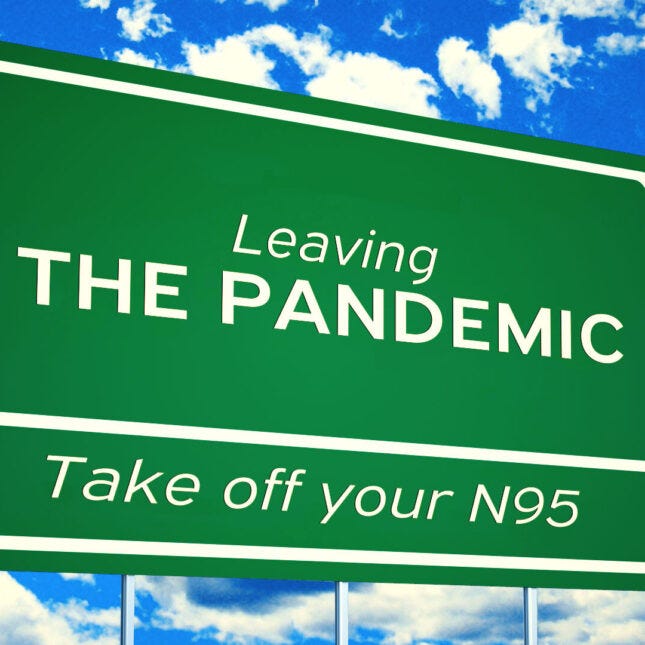
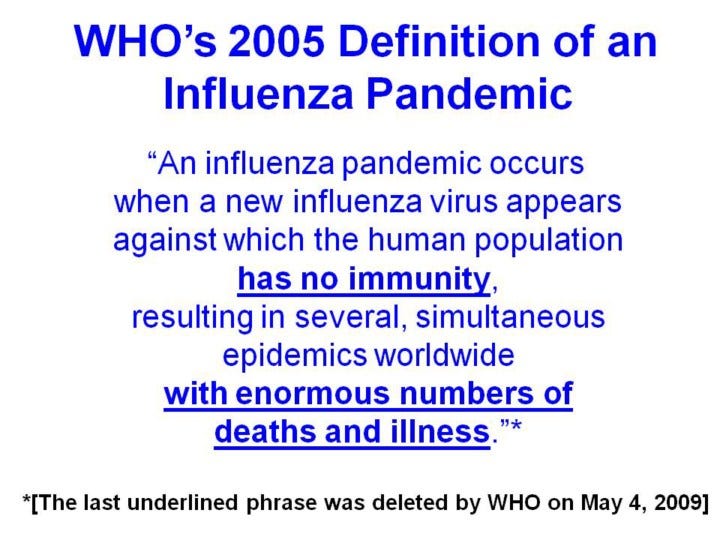

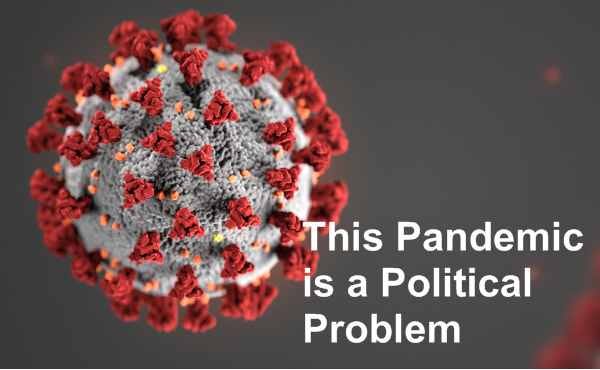
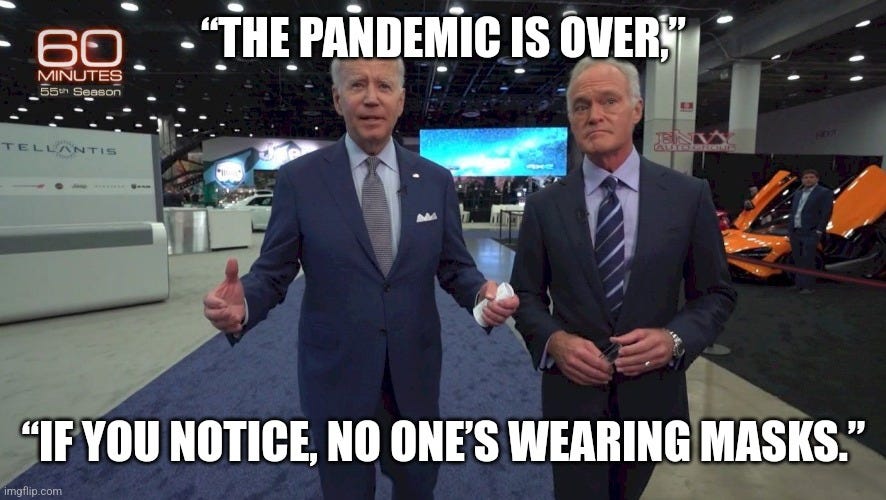

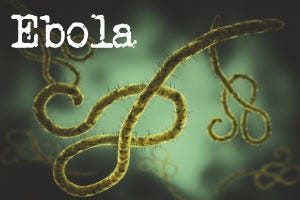
I would take this even one step further & say there were NO deaths from any of these differently named flus. The flu is an intensified effort initiated by the body when its toxin & debris load gets to dangerous levels. People may die with the flu, but not because of it. The body never does anything to hurt itself. Those that die do so because of their interfering with the body's efforts via medical treatment protocols or other factors that overpower the body's efforts, as well as pre-existing illnesses, intense fear, etc.
Happy launch, Mike, thanks for the great work. Onward to the next... Plandemic.